Scotland is full of incredible heartlands that people all over the world should visit.
Here, we present 10 places that all members of Clan MacLeod of Raasay should try to visit at some point in their lifetime.
1. Eilean Donan
The Macraes of Eilean Donan supported the Jacobite rebellion of 1715 and suffered great losses at the Battle of Sheriffmuir. The castle was destroyed by the British Royal Navy in 1719 in retaliation. When the ‘45 came around, the Macraes chose not to support Bonnie Prince Charlie – unlike the Raasay Macleods. On display at Eilean Donan today there is a letter from the young prince urging the Raasay Macleods to join his cause, as well as silverware bearing the Raasay clan coat of arms. Those with a keen eye will also spot a Raasay coat of arms in the banquet hall.
2. Arvreck Castle
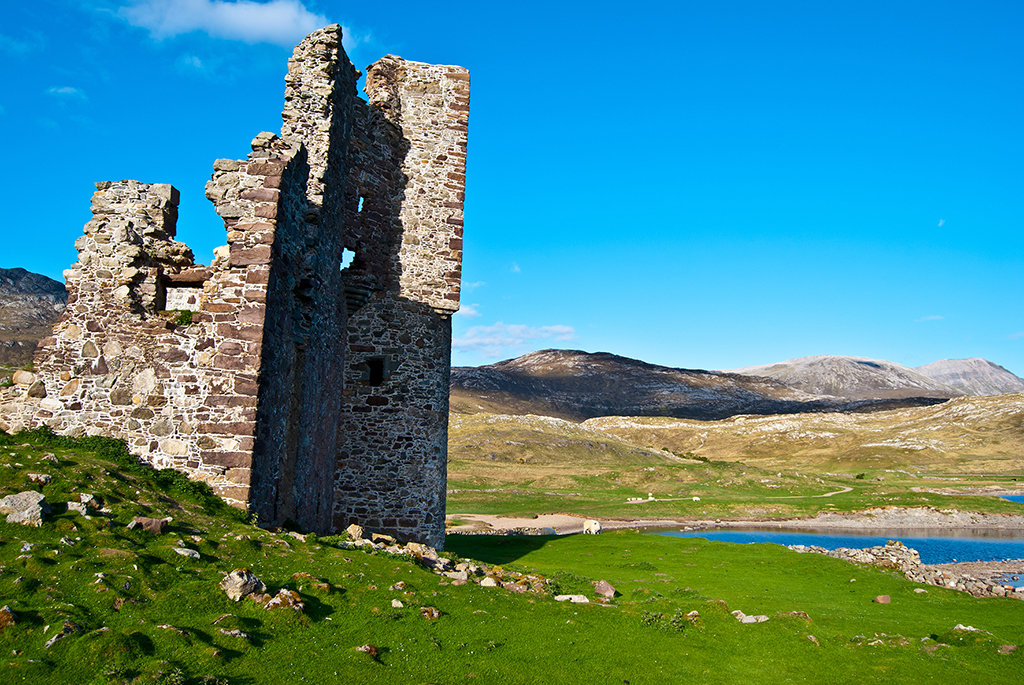
This rectangular stronghold was built towards the end of the 16th century by Clan Macleod, who owned Assynt and the surrounding area from the 15th century onwards. The castle was attacked, captured and destroyed by Clan MacKenzie in 1672, who then went on to claim the Assynt lands and build their own fortress, Calda House, which also stands in ruins today. Those with a sharp eye might see the remnants of a walled garden and courtyard, and when the waters of Loch Assynt are high, the castle is cut off from the mainland.
3. Scroggie Wood
The location of the Battle of Carbisdale, where the Marquis of Montrose was defeated. James Graham, 1st Marquis of Montrose, fled Scroggie Wood and was given shelter at Ardvreck Castle by the wife of Neil Macleod of Assynt. Unbeknown to Montrose, it was a trap and he was betrayed to the Earl of Argyll and later executed in Edinburgh on 21 May, 1649.
4. Brochel Castle
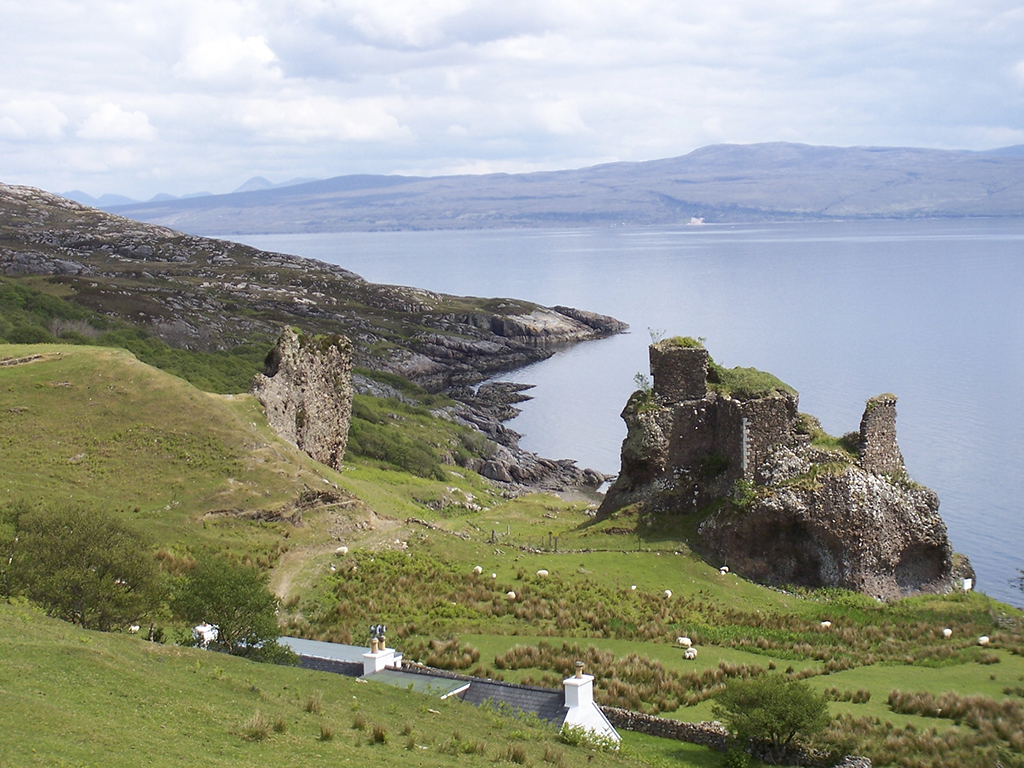
The ruined home of the Macleods of Raasay can still be seen on the island. Occupied up until 1671, it now stands only as ruins. An impregnable stronghold on Raasay’s north eastern shore, it provided a strategic base for a dynasty of roving seadogs to control their mainland possessions and the Inner Sound.
5. Pictou, Nova Scotia
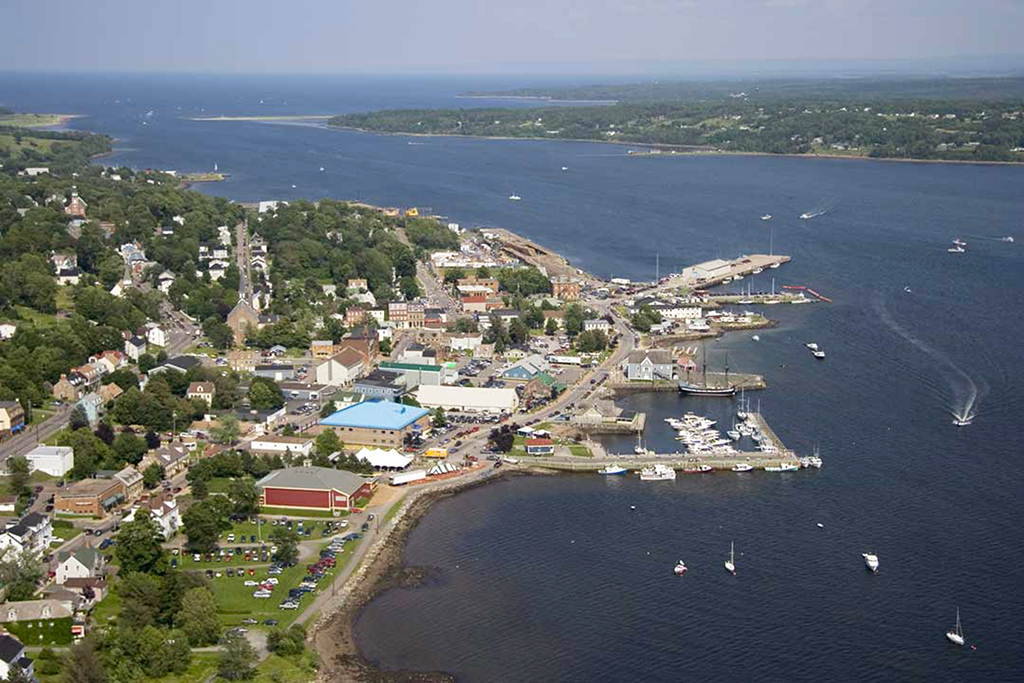
Presbyterian minister Rev Norman Macleod was born in Assynt in 1780. In 1817, during the Highland Clearances, he emigrated to Pictou, Nova Scotia, where there was already a strong Highland community from Loch Broom. The following year 150 of his so called ‘Normanites’ followed. The reverend found his community in need of a minister and founded Pictou’s first church. In 1822, he and his followers moved to Cape Breton, then in 1851 to Australia and later New Zealand.
6. Nalang, South Australia
The Isle of Raasay was sold in the mid 1800s, and the chief and his family emigrated to South Australia. Loudoun Hastings Macleod took up a pastoral lease called ‘Nalang’, near Bordertown, 180 miles southeast of Adelaide, in 1845, with his brothers Francis and John (13th of Raasay) later joining him. Their gravestones are still visible at Nalang to this day.
7. Isle of Raasay
The Isle of Raasay was ruled by the Macleods from the 15th to the 19th century. Raasay itself means ‘Isle of the Red [or Roe] Deer’, due to the prominence of the species on the island. With the recent restoration of Raasay House and the new car ferry terminal, there
is no excuse not to visit the island.
8. Clan gravestones on Drumossie Moor
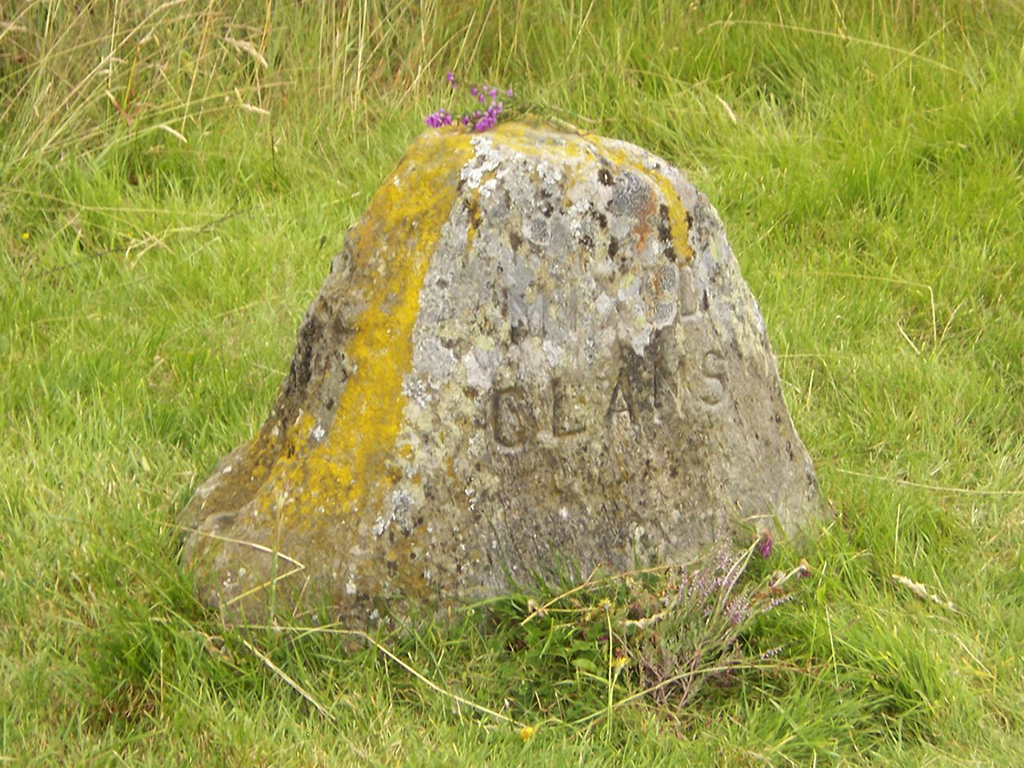
Proud supporters of the Jacobite cause during the ‘45 Uprising, many Macleods of Raasay lost their lives at the Battle of Culloden. Here the clan gravestones mark the 1,500 Jacobites who died here. After the battle, Bonnie Prince Charlie spent two days hiding on Raasay from the Hanoverian troops. In revenge, the Government soldiers pillaged the island, killing all the livestock, sinking all the fishing boats, and burning Raasay House to the ground.
9. Raasay House

Raasay House, located on the Isle of Raasay, is a Georgian mansion built in the 1750s. It is thought the Macleod connections date back to at least the 17th century when the house of the Macleod Chief of Raasay stood near the present site in Clachan. The house came back into Macleod control when in December 2007 the Raasay House Community Company (for whom Chief John Macleod is patron) purchased the property. Now the house, having fought off a fire 2009, is a hotel, activity centre and café.
10. Ui Church
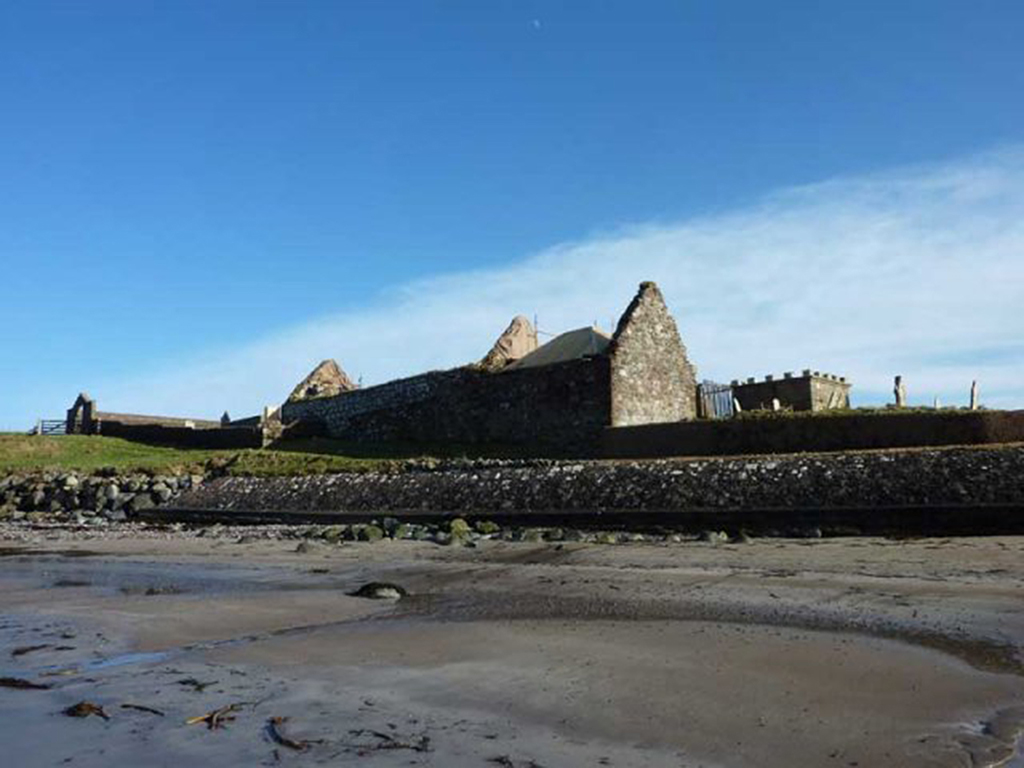
Situated near Stornoway on the Isle of Lewis, Ui Church – commonly known as St Columba’s Church – is a 14th-century ruin and graveyard. Several stones of buried MacLeod clan chiefs, ancestors to the Macleods of Raasay, have been excavated over the years. All together there may be as many as 19 chiefs buried on this one site. One intricately carved stone grave slab on display reads: ‘Here lies Margaret, daughter of Roderick MacLeod of Lewis, widow of Lachlan MacKinnon, died 1503.’
TAGS

